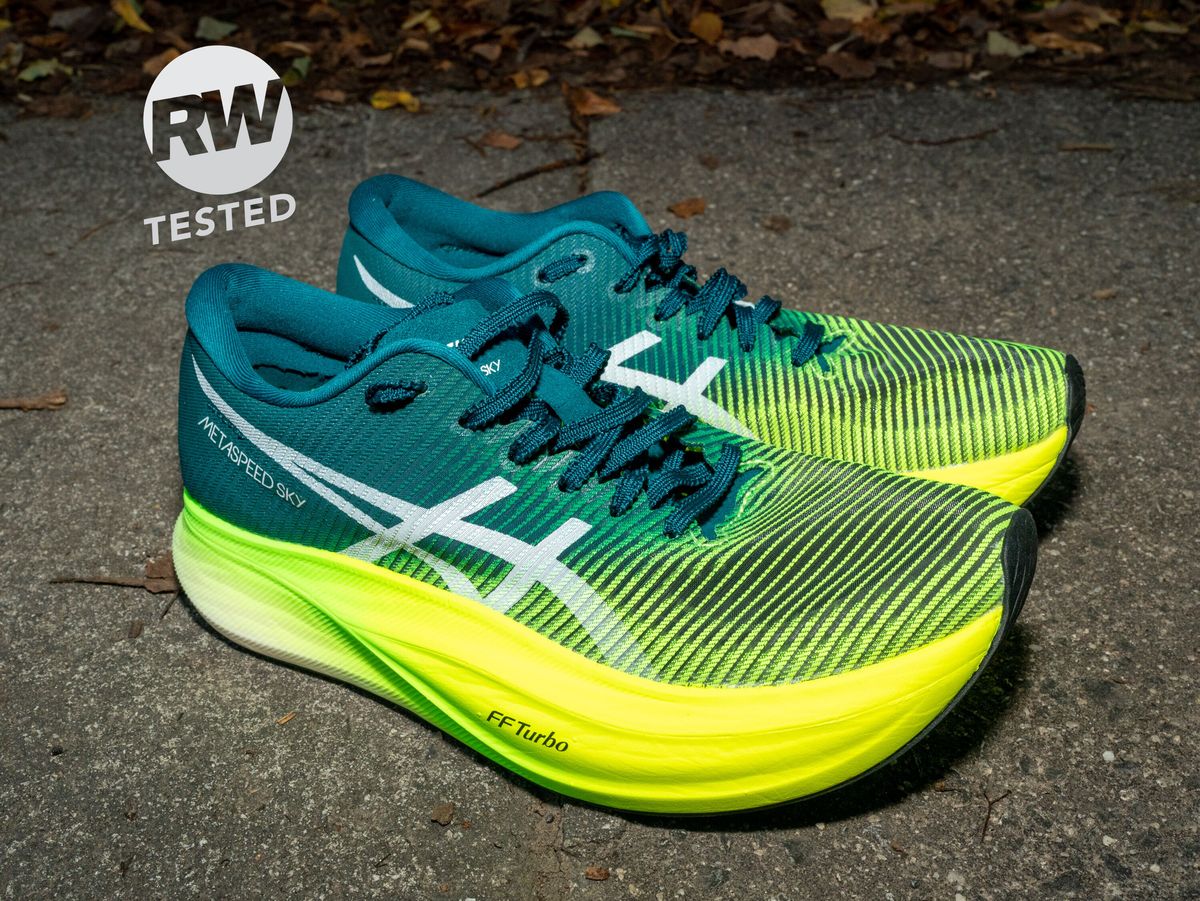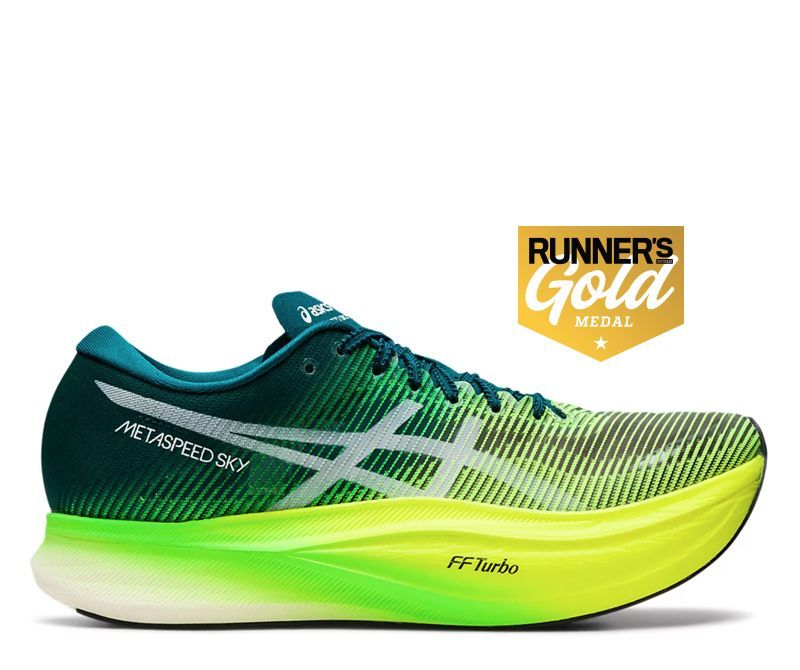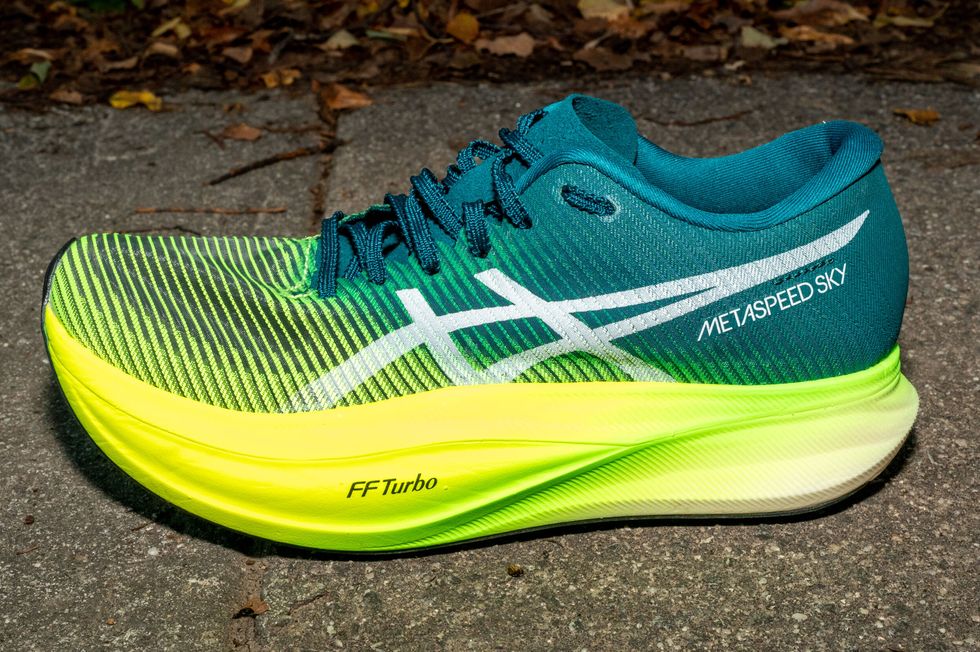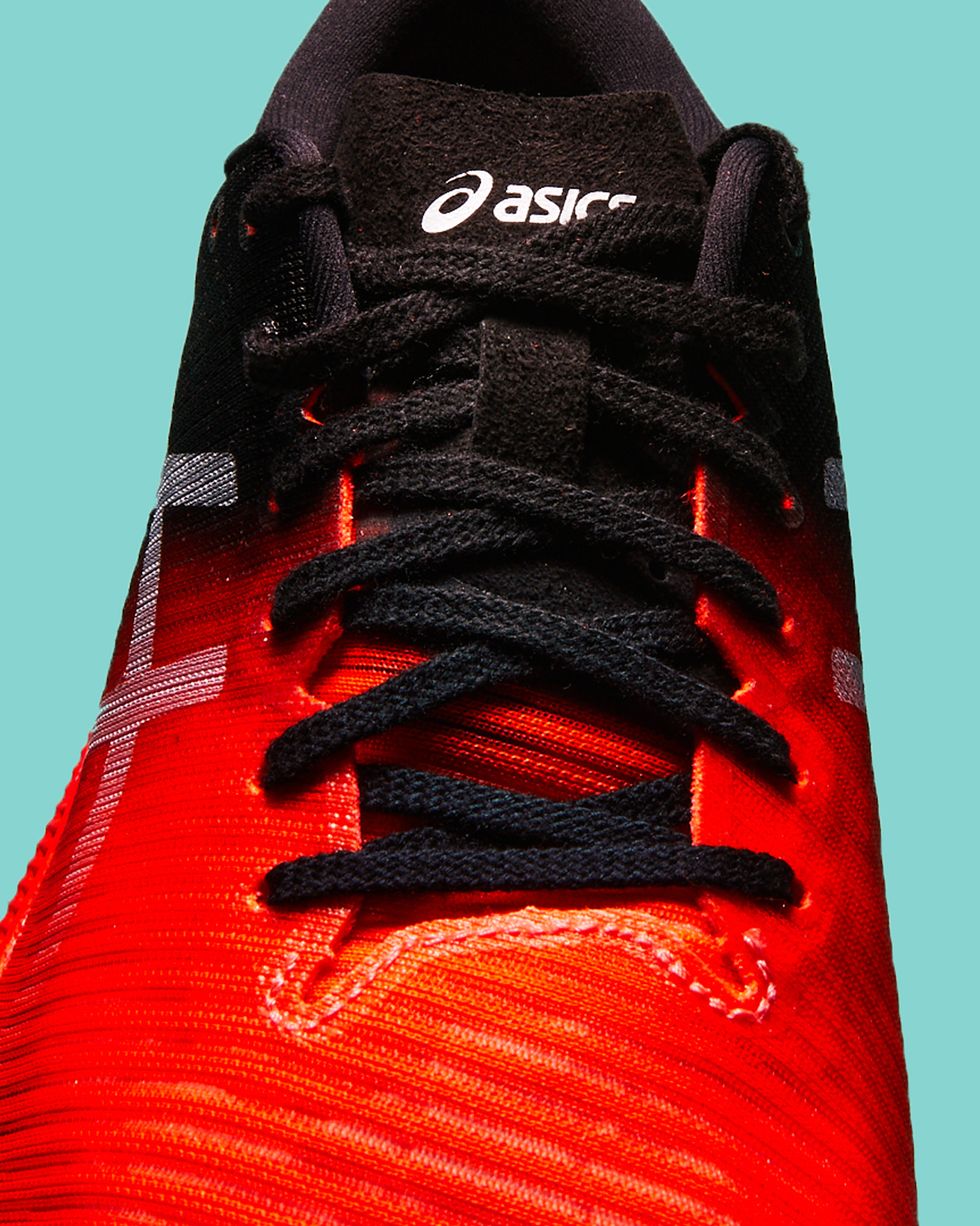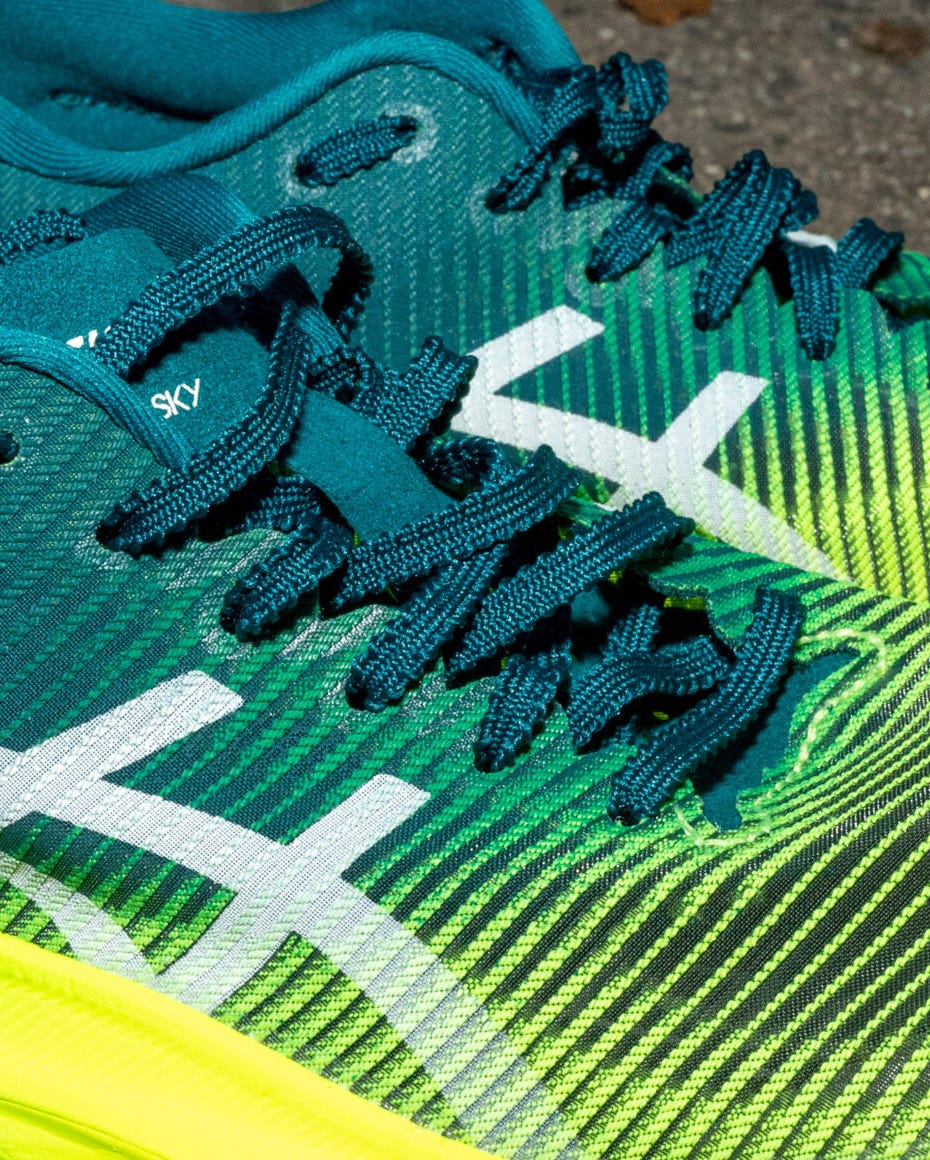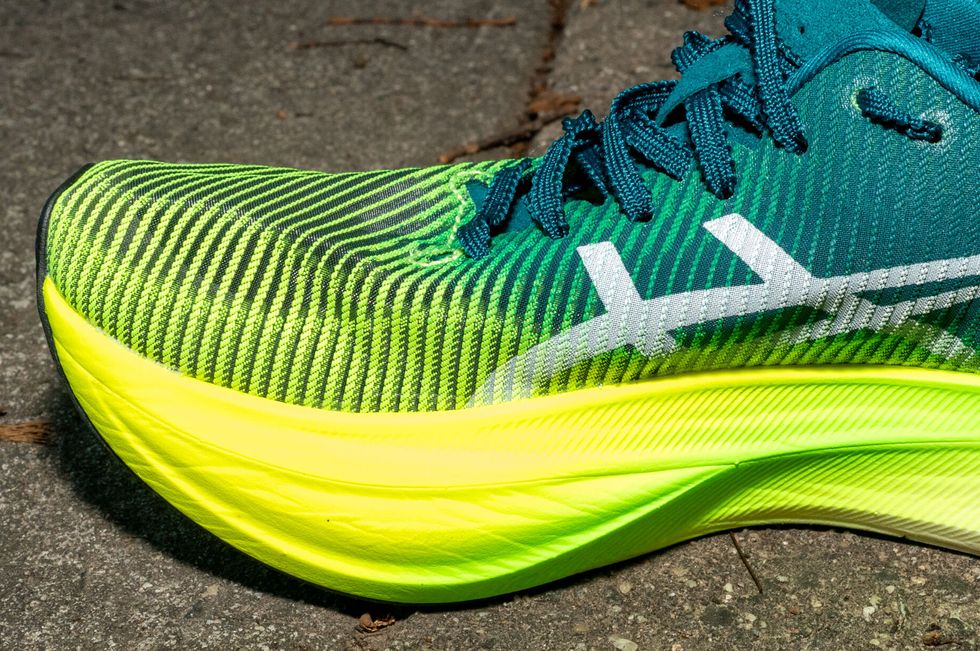The RW Takeaway: A speedy marathon racer designed for runners with long strides
- New Flytefoam Turbo midsole offers more cushioning that the Sky v1
- Full-length carbon-fiber plate delivers a very stiff and super springy ride
- Not quite as fast as Nike’s Vaporfly Next%, but it comes pretty darn close
Price: $250
Type: Racing
Weight: 7.1 oz (M), 5.8 oz (W)
Drop: 5 mm
Buy Men’s Buy Women’s More Images
More From Runner's World

Building a super shoe is more complicated than just sticking a piece of carbon in a tall stack of foam and calling it a day. The interplay of foams’ and plates’ specific densities and geometries needs careful tuning to provide a tangible benefit. And even then, some runners will benefit more than others. For example, biomechanical testing of the Nike ZoomX Vaporfly 4% showed that certain runners sped up only a single percentage point while others saw boosts of up to six.
There are many reasons why some runners respond better than others to super shoes—some “non-responders” don’t see any significant difference. Running speed, foot strike, experience, age, body size, gender, and more all play a role. But one promising area that Asics wanted to focus on for the MetaSpeed line was gait mechanics. So, the brand built two versions, each geared to a specific running style.
The Sky+ and Edge+ leverage the slight changes of your stride as you accelerate. Some runners will take longer steps as they push the pace—Asics calls them “stride” runners. Others speed up by taking more steps, or increasing their strides per minute. If that’s you, you’re a “cadence” runner. With this knowledge, Asics experimented with which shapes and structures benefited each type the most, and built MetaSpeed twins: the Sky+ for long striders and the Edge+ for the cadence crew.
I believe the best way to choose between the Sky and Edge—barring the option to trial them both at your local store—is to go with the ride that sounds most enjoyable to you. (More below on what to expect while running in the Sky+ model.) Just remember that these shoes aren’t designed to change your gait. Rather, they’re made to complement your existing mechanics.
If you want a more formal diagnosis, Asics now offers this online calculator to determine which MetaSpeed is best for your running style. To use it, you’ll have to complete two one-kilometer runs (the first at your 5K race pace, the second at 30 seconds per kilometer slower than 5K race pace) and track your cadence for each. Once you’ve finished, plug in those numbers and click “Calculate” for your shoe recommendation.
Running in the Sky
The Sky+ has more foam underfoot than its predecessor. And, it uses Asics’s most premium nylon-based Flytefoam Turbo, the lightest and springiest the brand currently dishes. The Sky+ also has more of the material than the Edge+, with a carbon-fiber plate placed higher inside the midsole. This lets the foam between the plate and outsole compress more—and therefore store more energy—to give stride runners additional height on their long, bounding toe-offs. With its lower heel-toe drop, the Sky+ rides differently than shoes like the Edge+ and Nike Vaporfly Next% 2. While testers said transitions felt a bit less propulsive, they welcomed the abundant forefoot cushioning.
More Testers’ Takes
Steven B. | Tester since 2021
Arch Height: Flat | Pronation: Overpronator | Footstrike: Midfoot
“Running 400s at 80-85 seconds each and 800s in 3:00-3:15, these shoes really responded well—the longer my stride, the more stable I felt. Running at these speeds seemed quite easy (almost like cheating, as I felt the shoe propelled me forward). At slower paces, I didn’t feel very comfortable, as I found that I was almost rocking backwards towards the heel where there wasn’t as much stability and cushioning. If I picked up the tempo to 6:30-7:00/mile pace, the shoes once again responded nicely by springing me forward. I know these shoes are intended for racing, but when you are not going fast enough, the voluminous amount of foam in the forefoot makes you feel like you’re wearing a stiff marshmallow. Running downhill for long stretches was almost painful on my calves.”
Anthony C. | Tester since 2021
Arch Height: Normal | Pronation: Overpronator | Footstrike: Midfoot
“I did a 14-mile run with the last mile in 5:13—it was absolutely incredible that I felt comfortable through 12 miles and then could easily turn it on for some quick miles at the end. The only other shoe I’ve worn with that experience was the Nike Vaporfly Next%. These are distinctly different shoes, but I’d recommend this pair to any runner, even if they are not looking to race in them. The one key difference that I loved about the Sky+ was that they felt like a traditional running shoe. (In other carbon-plated shoes, I felt like I was standing nine inches taller or wearing clown shoes.) You can definitely feel the plate when you put your foot inside—you’d think, ‘Wow, that is gonna suck to run on’—but you don’t notice it once you get running. While the stability on turns was a bit lacking for my gait, there was no slipping or sliding inside the shoe.”
